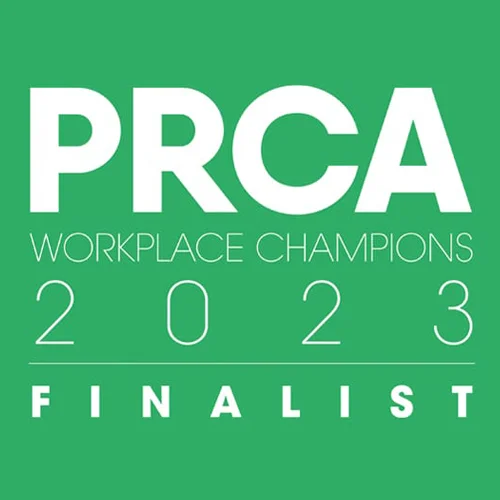As businesses prepare to reopen over the coming months, there has been a lot of talk about whether workplaces will ever be the same again. Social distancing has led to an enormous increase in home working, while new social distancing rules are likely to impact the design and capacity of office space.
This topic was the focus of discussion in a recent webinar from Workplace Trends, an annual conference organiser that was forced to postpone its own Spring Summit back in March. Three recognised workplace experts shared their thoughts and predictions for the workplace post-Covid-19 before answering questions from the audience. The webinar was moderated by environmental psychologist and researcher Dr Nigel Oseland. The panellists were:
- Tim Oldman, founder and CEO of Leesman
- Arjun Kaicker, co-head of workplace analytics and insights at Zaha Hadid Architects
- Kerstin Sailor, co-founder of brainybirdz and reader in social and spatial networks at UCL
The webinar started with presentations from each of the panellists.
Arjun Kaicker
- Companies are already focusing on variety and flexibility, health and wellbeing, connection and collaboration, and IoT and AI
- There are opportunities to create much healthier workplaces beyond Covid-19
- Collaboration cannot be a scattergun approach
- Tech will be fast-tracked to address immediate concerns
- Movement and circulation will be addressed in building design e.g., escalators may be narrower to fit only one person
- Analytics can be used to help with social distancing and to determine how furniture arrangements play a role
- Automated space planning can be used to keep 2m distances
- Zaha Hadid was looking at Allen Curve and how to improve collaboration zones pre-lockdown e.g., put individuals in close proximity to the people they need to be near. Analytics can help with this as people don’t just talk to colleagues within their own teams
Kerstin Sailor
- Buildings tend to have two mechanisms: bring people together (office) or keep people apart (court)
- Organisations need to introduce physical distancing but without losing the social community
- People may be excited to return to the office, but it could be a lonely experience
- In linear layouts you cannot have circulation as people will need to pass each other
- Open plans can help with circulation and encourage congregation
- We still want to see offices as a place for meaningful encounters
- Complex tasks that require trust and dynamic thinking are best face-to-face; simple tasks that are low risk and stable are more easily accomplished remotely
Tim Oldman
- Nobody knows what the workplace will look like in 2021 as the situation is changing so fast, so speculating is dangerous. But there is likely to be a blended mix of home and office working
- We’re suffering a bit from target fixation. Stop looking at the obstacle immediately in front of us. Instead, focus on the space around and beyond it
- We’re only eight weeks into the lockdown and the work-from-home (WFH) experiment, so there’s still very little evidence we can use. Let’s be respectful to the pace of workplace evolution
- Survival basis means looking at the data that you have, but also at the data that you don’t. For example, don’t just evaluate the meeting, but also the 5-10 minutes either side
- High performance workplaces needed high performance collaborative space, and also high performance concentration space
Following these brief presentations, Nigel Oseland asked the panellists some questions submitted by the audience.
Are we in need of a revolution In office design?
Tim: It varies greatly based on the office – a central London office is vastly different to an office park on the edge of a city.
Kerstin: It’s interesting to see what tech companies in Silicon Valley are doing – many have already said that staff can work from home until 2021. This gives staff some stability. A lot also depends on if and when a vaccine is available. Companies need to ask employees about their WFH experience and find a way to make sure meaningful experiences aren’t lost.
Arjun: It might be a revelation more than a revolution. Companies may be surprised by the reaction of staff to WFH versus some who are desperate to get back to the office. There needs to be support for both. There will be some evolution which is a good thing. Common office complaints revolve around office density, so physical distancing may bring a lot of positives (reduced noise, more space, etc.).
How can data help implement social distancing in the workplace? Is it even possible?
Kerstin: It will be very tricky and some will come down to interpretation. The Government advice has been tentative – a lot of the time it says ‘if possible, and if not do more cleaning’. We can adapt but will need new ways to be fun and / or productive. The prospect of signage, arrows on the floor, and lots of rules is daunting. It will come down to how organisations want to demonstrate they value their staff. Some research shows that larger floorplans lead to lower satisfaction because it makes interaction harder.
Tim: Open plan offices will not disappear overnight. We should have been doing more on occupant density 10 years ago. As an industry we need to get better about the impact of occupant density before making changes.
Will hot-desking be an option?
Arjun: It’s like Marmite – people love it or hate it, and the people who love it will find a way to make it work. For people who have resisted hot desking, this will be another reason against it. What we might see is desk sharing – you are allocated one desk to share with another person. It’s your desk for the whole day and the other person’s desk the next day, for example. That desk could be bigger than usual.
Are there any good examples of agile working environments?
Tim: Look at Leesman+ buildings (the highest performing workplaces on the Leesman Index): about 4.5% of buildings qualify for that rating. They are a mix of open and cellular layouts and with different occupant densities. It comes down to great design and depends on what’s needed by the company and by sector.
How long will it be before things return to normal?
Kerstin: Whenever we have a vaccine, hopefully next year. We need to be agile in our minds to constantly think and rethink.
Arjun: It won’t be the same as before. I hope we can learn from this experience to create better spaces.
Tim: The Chancellor extending the furlough scheme suggests that the Government doesn’t expect things to be back to normal any time soon. It’s a waiting game.
The hour-long webinar is available to view here and share your thoughts with us on Twitter @MagentaComms.








